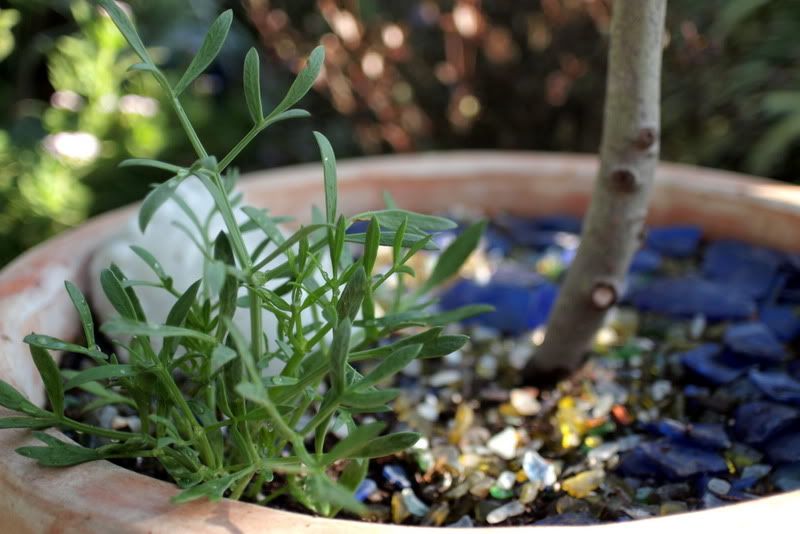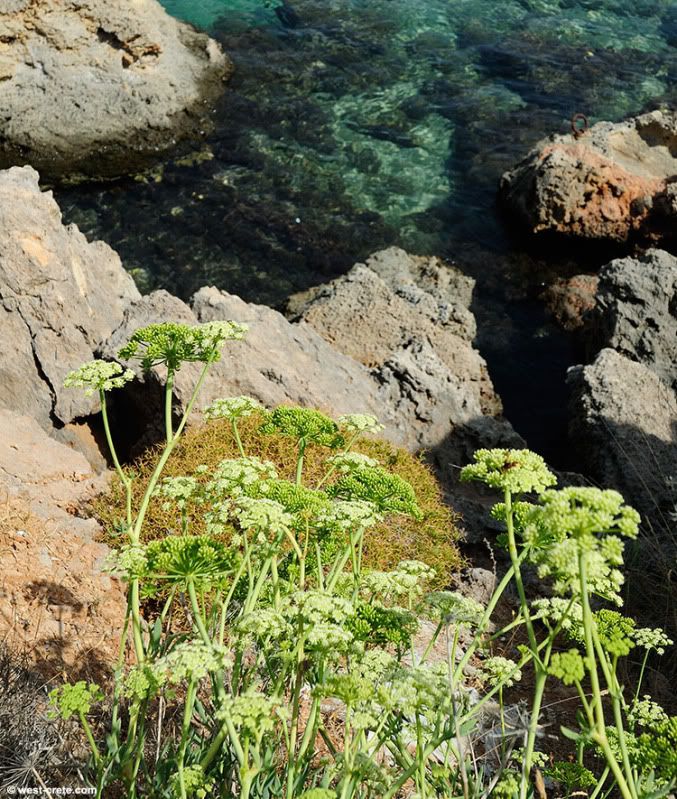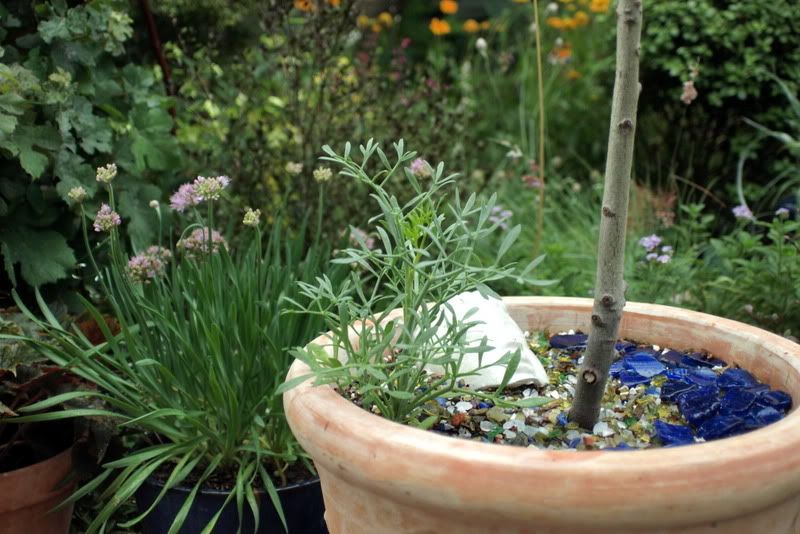You’d think selecting plants based on leaves, flowers, bark, and berries would be more than enough criteria to consider, but occasionally the quest for plants takes in other, less tangible considerations, at least for me, and certain plants can edge out others in desirability for reasons other than their good looks.
Take samphire. Isn’t that the most gorgeous word? The hard “m” to bite into, unlike “sapphire,” which spills (or luffs, for sailors) all that air.

Crithmum maritimum, the sole species of the genus Crithmum. I’ve long wanted to grow crithmum, more out of a bookish desire than anything else, since I’ve never laid eyes on it before.
I knew it was a tough, hard-scrabble umbellifer, but not much more, only that it occasionally is recommended by garden writers for its chartreusy umbels. And that name always stayed with me, Samphire, Crithmum maritimum.
A modest little fellow to look at out of bloom. He looks like snail fodder with those lacy, dissected, succulent leaves, so I planted him in a tall pot, at the base of a potted bay, Laurus nobilis, another ancient, Old World plant, at one time formed into wreaths to place on the brows of victorious Greek athletes, and darn handy to have near the kitchen.
Samphire is also apparently edible, though I doubt I’ll be partaking. 16th century English herbalist John Gerard attests: “It is the pleasantest sauce, most familiar, and best agreeing with man’s body.”
And Shakespeare writes of the difficulty in foraging for crithmum in King Lear: “Half-way down, Hangs one that gathers samphire; dreadful trade!”
A photo of samphire growing in the wild from Visit West Crete. A plant not likely to take the horticultural world by storm.

My samphire gathering was considerably less dangerous. Plucked from a growing bench at Annie’s Annuals. And samphire is also a name used to describe other cliff-dwelling maritime plants, such as Astydamia latifolia, also available at Annie’s, samphire arising from “sampiere”, a corruption of the French “Saint Pierre,” the patron saint of fishermen.
Crithmum maritimum, alias Crestmarine, Sea Fennel, Sea Pickle, Pasper, Pierce-stone, Sampere, Samphire, Rock Samphire, Sampier, Semper, Rock Semper, Camphire, Peter’s Cress.
Amazing that, unlike the extensive folklore and literature associated with Old World plants, New World botanical information was passed on to newcomers in the Homeric tradition, by word of mouth, from Native Americans, who had no written language (referring to outside of Mesoamerica). A similar situation met European immigrants in Australia, where there also was no indigenous written language.
For over 500 years the Old World has stared dumbfounded at the incredible diversity of plant life pouring out of the New World, and here am I, perched on the unstable edge of the western North American continent, tracking down an Old World cliff dweller also known as sea pickle, a botany of improbability more than desire. Who knows what part my idle curiosity will play in the unfolding tale of samphire, Crithmum maritimum, coast dwellers that we both are? But it’s more than doubtful that crithmum will be vigorous enough to join non-natives such as valerian, bronze fennel, and ricinus in blanketing coastal hillsides. Collecting samphire in the wild in Britain is protected and illegal under the Wildlife and Countryside Act of 1981. Still, it’s amazing what part people play in a plant’s dispersal, for reasons far removed from utility, food or medicine.
But, most importantly, is crithmum a garden-worthy plant here in zone 10? Too soon to tell, but I can’t wait to see it in bloom.

And continuing the maritime theme, now I can move on to Crambe maritima, the sea kale, and find out if I can keep the snails off it this time. Another coastal dweller famously grown by filmmaker Derek Jarman at his garden in Dungeness. Always more reasons to grow plants in addition to leaves, flowers, bark, and berries.

I love a plant that comes with a good story. A bookish desire – finally a good way to describe it.
It’s not just about the quest, is it? Good luck with lovely Samphire.
I live near the water in Sicily where samphire is rampant. Would love to transplant some to my home, how did you do it?
Was this experiment a success? I was served samphire on the south coast of England in April and loved it. It would be fantastic to grow it in Massachusetts.
Yes, Sarah, samphire is thriving here and reseeding.